The National Gallery of Liguria in Genoa, located in the historic Palazzo Spinola, is one of the most active museums in northern Italy. Constant exhibition activity, with small focused focuses on the collections, many initiatives for the public, and very important acquisitions that, in this sense, make it one of the most attentive museums in the country. Since 2015, the Gallery has been part of the Museum of the Royal Palace, one of the new autonomous institutes created with the reform of the Ministry of Cultural Heritage and Activities (an editorial on the museum’s new course is at this link), and which has just experienced a change in direction: after the farewell of Serena Bertolucci, who moved on to direct the Ducal Palace, and the current interim of Regional Secretary Elisabetta Piccioni, the Royal Palace will be directed by Alessandra Guerrini. We spoke with Gianluca Zanelli, director of the National Gallery of Liguria,about all these issues, with particular reference to the policy of acquiring new works of art . The interview is edited by Federico Giannini, editor in chief of Finestre Sull’Arte.
FG. Let’s start with the most recent acquisition of the National Gallery of Liguria: the portrait by Anton von Maron (Vienna, 1733 - Rome, 1808) depicting Maria Francesca Durazzo, a painting of considerable value that, moreover, risked ending up abroad...
GZ. This purchase was the result of a very close collaboration with the export office of the Superintendency of Genoa: the painting had been presented to obtain a certificate of free circulation, and the commission, after making some investigations, considered it important, proposed its purchase to the Ministry of Cultural Heritage and Activities, and the Ministry gave a favorable opinion. It is a very important painting because it is an evidence, dated and signed, of Anton von Maron’s stay and activity in Genoa, and the person portrayed itself is very interesting because it is the mother of the last owner of the Royal Palace. Since there are not many works by von Maron in state collections, nationwide, we felt it was important to acquire it for the heritage of the National Gallery of Liguria. Also because I believe that the Gallery is a reality that should try to make usable works not only related to the Genoese context, but also to the whole regional territory, as was the idea of the donors of Palazzo Spinola themselves. The portrait is an important work from Anton von Maron’s brief Genoese sojourn (1791 to 1793), and around the painting we organized a small exhibition, a presentation, comparing the portrait with our 1793 painting by Angelica Kauffmann, the portrait of Paolo Francesco Spinola. So we presented together the two international painters who were working in Rome at that time, in order to enhance the fact that the Genoese nobility, despite a moment that was certainly not favorable, if not one of decadence, nevertheless expressed a very up-to-date patronage. So, on the one hand, Paolo Francesco Spinola commissioning Angelica Kaufmann, and on the other, Cicchetta Durazzo receiving this portrait of international taste as a gift from the painter.
Another important acquisition is that of the splendid altarpiece with the Vision and Martyrdom of Blessed Marcello Mastrilli by Anton Maria Vassallo. In this case it was a donation. How did you work to achieve this acquisition?
It was an important donation and fortunately not the only one in recent times. We were contacted by the owner, a collector, who was pleased to remember the figure of her father precisely through the donation of a work to the museum. This altarpiece by Anton Maria Vassallo, remembered from the sources, with a very particular subject (the Blessed Marcello Mastrilli, which is a unicum in the sphere of Genoese altarpieces), probably comes from the Gesù church, and it is a work that then probably in the 19th century, after the suppressions of the ecclesiastical orders or after the updating of some chapels, was put on the market and purchased by a family. It has been important for us to have created a very close relationship with some collectors, and in general the relationship that is being created with private entities is significant. Cases like this are not new for the museum: a similar relationship, for example, was born a few years ago in an unexpected way with the journalist Giuseppe Gallo, who at the time of his will had left some works to the National Gallery of Palazzo Spinola (and we were not aware of this gesture). But other things have moved as well, including small but for us significant donations: for example, a 19th-century mezzaro and other textiles from the second half of the 19th century have recently arrived to enrich the textile collection. Returning to the paintings, a work by Gregorio De Ferrari was recently donated, which will be presented in November in one of the upcoming initiatives, and which is linked to the important nucleus of paintings of the Labors of Hercules, bought by the Ministry in recent years: this nucleus has been supplemented precisely thanks to this additional donation. The five paintings depicting the Labiae of Hercules, moreover, are currently on loan to the Venaria Reale exhibition. Again, also this year, with our directors (first Serena Bertolucci and then Elisabetta Piccioni), we initiated an Art Bonus project aimed precisely at supporting the activity of increasing the collections. I will not hide from you that for now it has not been able to take off much, but we are very confident: in recent years, especially since 2000, on acquisitions we have received many favorable opinions from the Ministry and the collection has been enriched with many works. Therefore, it is mainly the Ministry that, with instruments such as private treaty, compulsory purchase and pre-emption, has made possible an important increase in the National Gallery of Liguria. We would like other works to be able to be acquired through patrons as well, which is why we are now also trying to make contacts with banking foundations or large corporations, because the proposals are there, but the problem then is to concretize them.
 |
| Anton von Maron, Portrait of Maria Francesca Durazzo (1792; oil on canvas, 200.6 x 147.3 cm; Genoa, National Gallery of Liguria at Palazzo Spinola) |
 |
| Angelica Kauffmann, Portrait of Paolo Francesco Spinola (1793; oil on canvas; Genoa, National Gallery of Palazzo Spinola) |
 |
| Anton Maria Vassallo, Vision and Martyrdom of Blessed Marcello Mastrilli (1740s; oil on canvas; Genoa, National Gallery of Liguria at Palazzo Spinola) |
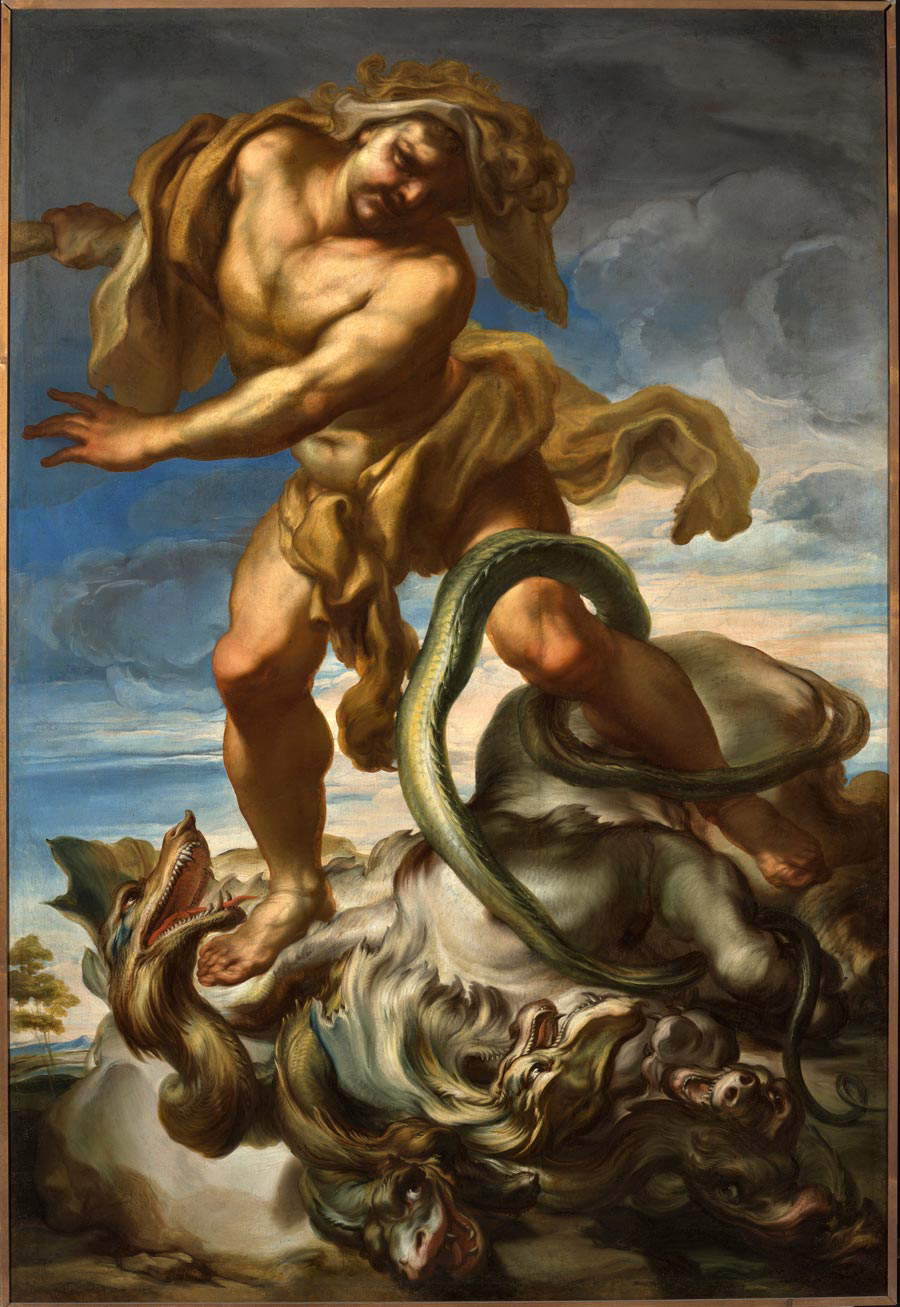 |
| Gregorio de Ferrari, Hercules and the Hydra of Lerna (late 17th century; oil on canvas; Genoa; National Gallery of Liguria at Palazzo Spinola) |
How important is it for a museum like the National Gallery of Liguria to see its collection steadily growing, and therefore how important is it to invest in expanding the collection? Often there is no perception of it.
It is fundamental, and moreover it is also an indication of ICOM: among the missions of a museum is also the increase of the collections. And it is fundamental especially for a reality like the National Gallery of Liguria, which is young, since it was opened in 1959 and was ideally born with the 1958 donation of the Marquises Spinola. The National Gallery of Palazzo Spinola and the National Gallery of Liguria constitute two realities united in the same building, with two histories that are, however, different. The 1958 donation closed the history of the historical collection of Palazzo Spinola, and in the same year the National Gallery of Liguria, which had been forcibly desired by the marquises and Pasquale Rotondi, a very prominent figure (in fact, the first acquisitions date back to 1958), began to live. Then there were some years of stalemate, until 1966, when the first work connected to the Genoese territory was bought, Giovanni Pisano’s Justice, and again a resumption from the 1980s with Giovanna Rotondi Terminiello, following the criteria that we still carry on today. We therefore have a history that is made up not only of acquisitions of beautiful or important works, but also of acquisitions of works that are strongly rooted in the territory. This is the basic requirement: either they are works that come from historical collections, remembered from sources or recorded in inventories, or they are testimonies of the most important representatives of Genoese figurative culture, from the 14th to the 18th century. However, nothing prohibits the recovery of works from the nineteenth century as well, a century that still deserves to be rediscovered. These are the criteria and goals of the museum: we think (first of all the manager and then us) that it is really a mission. For me then it is a source of great satisfaction to see that from the Ministry there is great attention and that proposals are examined with great care. It is not always possible to achieve a positive outcome because the funds may not be very many and above all they have to be allocated to all national realities, but it is certainly possible to say that the collections, in recent years, have been enriched with important works.
Last year, then-director Bertolucci talked about expanding the National Gallery of Liguria based on the assumption that the space in Palazzo Spinola would no longer be enough. How is this project proceeding?
We are waiting for the new director to see what his choices will be. Undoubtedly I believe that, in the near future, it will have to be considered an important project and one to be followed carefully, because the works, rightly, must be purchased to be exhibited and not to be kept in storage. Moreover, in my opinion it will have to be a double project, in the sense that if one day a suitable location is found to house the National Gallery of Liguria, this move should not be a depowering of Palazzo Spinola. Therefore, there will have to be two museum projects, since the third and fourth floors of Palazzo Spinola will always have to be included in the tour route. There are various ideas: for example, personally I would very much like to keep in Spinola everything related to the decorative arts (ceramics, textiles, and so on) that dialogue closely with the historical context of the first and second floors, and check the possibility of leaving a gallery of the portraits of the Genoese, so that the historical gallery could also be communicated through the portraits of the Genoese nobles realizing in this way also a path that links the historical floor to the upper floor (in the historical picture gallery there are various portraits that came to Spinola, from van Dyck to Molinaretto), and integrate this gallery through other portraits that could enrich the path in the historical part. It is a project to think about, it is an important project in terms of timing and resources (we need not only to move works, but also to make the new location suitable, and to avoid making Palazzo Spinola empty, but rather to continue to keep it full in a just and relevant way), and it is a project for which it is important to be able to count on the presence of a new manager.
 |
| National Gallery of Liguria at Palazzo Spinola, Rubens room |
 |
| Spinola Service (China, Qing dynasty, Qianlong reign, c. 1770-1780; tea and coffee service including a rinsing bowl, a sugar bowl, and three service plates; Genoa; National Gallery of Liguria at Palazzo Spinola) |
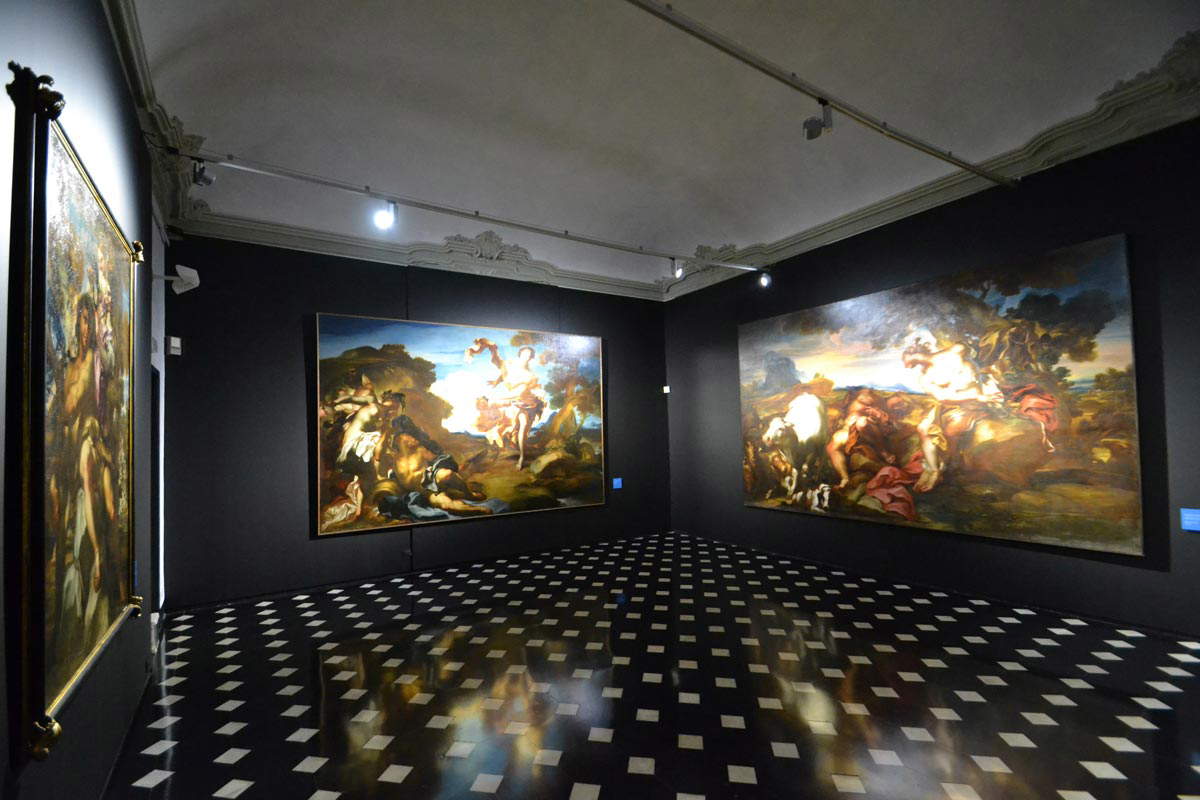 |
| National Gallery of Liguria at Palazzo Spinola, de Ferrari room |
Will this project lead you to change the way you work on exhibitions? At the moment, the Gallery organizes some very interesting exhibitions and has to do it in a very focused and intelligent way (and, I must say, it fully succeeds), given the available spaces...
Yes, we don’t have very large spaces for exhibitions. Sometimes I’m a bit embarrassed myself, in the sense that I don’t know whether to call them exhibitions, expositions or presentations, because even on the occasion of the von Maron exhibition it was an event with only two paintings. It is true that sometimes even one work is enough to make an exhibition, but undoubtedly space plays a very significant role. We mainly create what I like to call “insights”: on the occasion of the presentation of Bernardo Strozzi’sAllegory of Painting, we set up the other works by Bernardo Strozzi from the historical picture gallery alongside this painting. And for us this is a way to provide the visitor with an in-depth look within the tour. I anticipate that in June we will present another in-depth exhibition, dedicated to Tintoretto’s portrait depicting Scipione Clusone, which is part of the National Gallery of Liguria, together with other Venetian paintings kept instead in the historical part of the Gallery, and another small canvas that is part of the collection of the National Gallery of Liguria (a 1960 donation), which had never been exhibited and which also deserves to be known because it is the work of an important Venetian painter of the 18th century. Obviously, when we organize an exhibition, a show, a presentation, we do not have the opportunity to borrow a lot of works: we try to create comparisons with a few works, hopefully interesting ones. I’m reminded of last year’s exhibition on Cavarozzi’s Sacred Families on the occasion of the loan of Rubens (the portrait of Gio. Carlo) to Milan, I think it was also an interesting moment because probably one of the Sacred Families comes from this palace, it was owned by Spinola, so it was also an opportunity to make a painting “come home.”
And what feedback do you have from the public about your activities?
I must say very positive: last year there was an increase in visitors. I agree with those who say that it is not the number of tickets taken out that should determine whether a museum is important or not: of course our museum is not a large container, and there are problems related to lack of staff, but when we plan an exhibition we try to do it the best we can. I usually follow those related to acquisitions: this is the moment when a new acquisition materializes, but sometimes I also like to focus on an acquisition that is not recent and needs to be reevaluated. This is the case with the Tintoretto portrait, which was allocated to the Ministry in 1988, but one of the next projects will be to present the acquisition of a portrait by Alessandro Magnasco along with a painting by Paolo Pagani that was acquired in the early 1980s. This is the maininput for choosing the topics of the exhibitions, obviously maintaining a connection with the historical heritage of the palace. Another project that I would like to pursue in the future is that of Neapolitan painting, because between the historical collection of the National Gallery of Palazzo Spinola and the acquisitions of the National Gallery of Liguria, the nucleus is really important (there are four paintings by Luca Giordano alone and they also document various moments of his path).
Do your activities mainly interest Genoese people or those from outside? How is your audience distributed?
I notice that there is an increase in tourists, not only from Europe: thanks also to the collaboration with the staff, I find an increasing presence of tourists who come from outside Europe and who knew little about Genoa. There is also a very close relationship with the historic center and its inhabitants: workshops and activities are being created that allow Spinola to dialogue with, for example, the whole area of La Maddalena, also because the museum is at the center of this context and thanks to its works it dialogues with churches and buildings placed in this context.
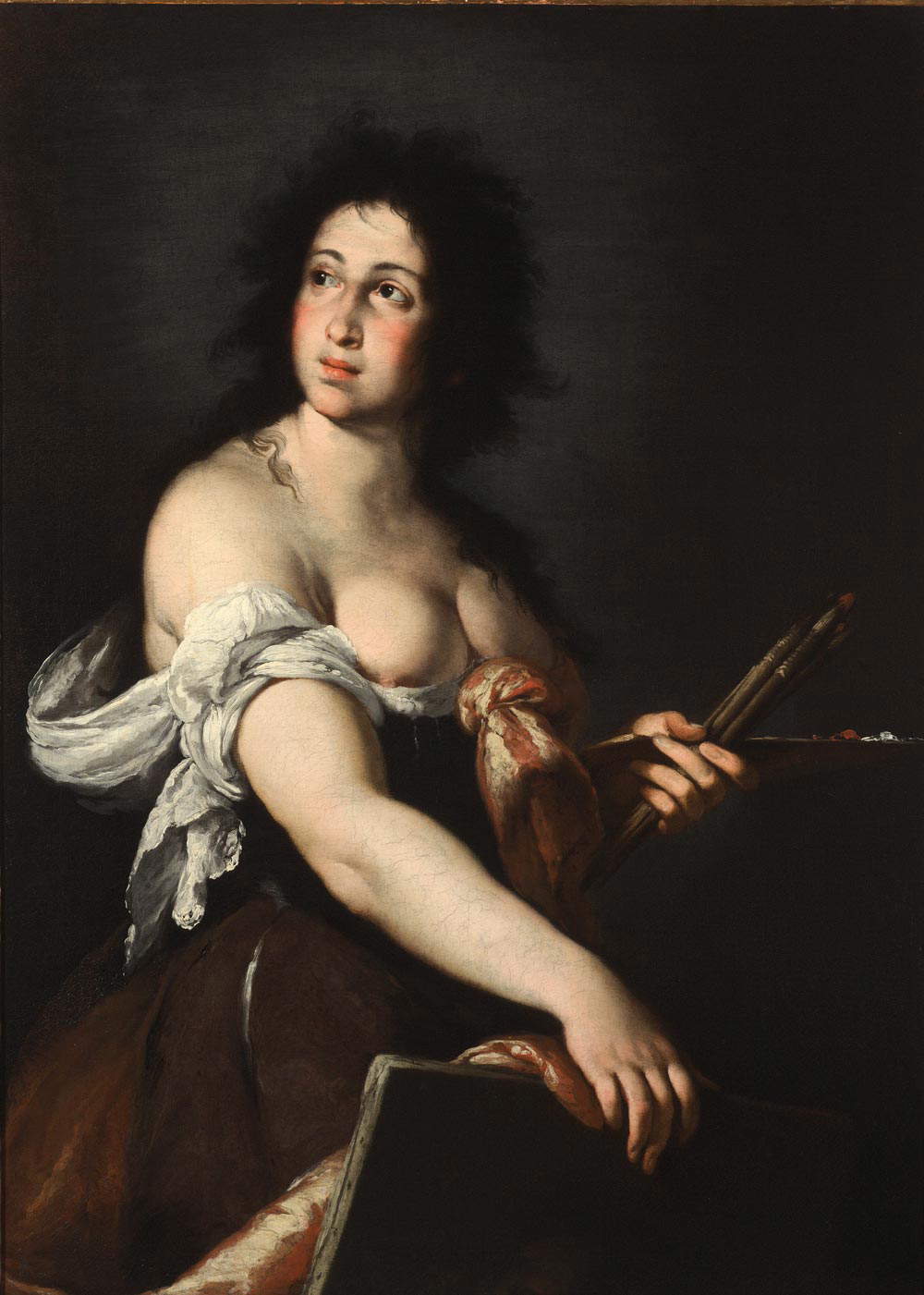 |
| Bernardo Strozzi, Allegory of Painting (ca. 1635; oil on canvas, 130 x 94 cm; Genoa, National Gallery of Palazzo Spinola) |
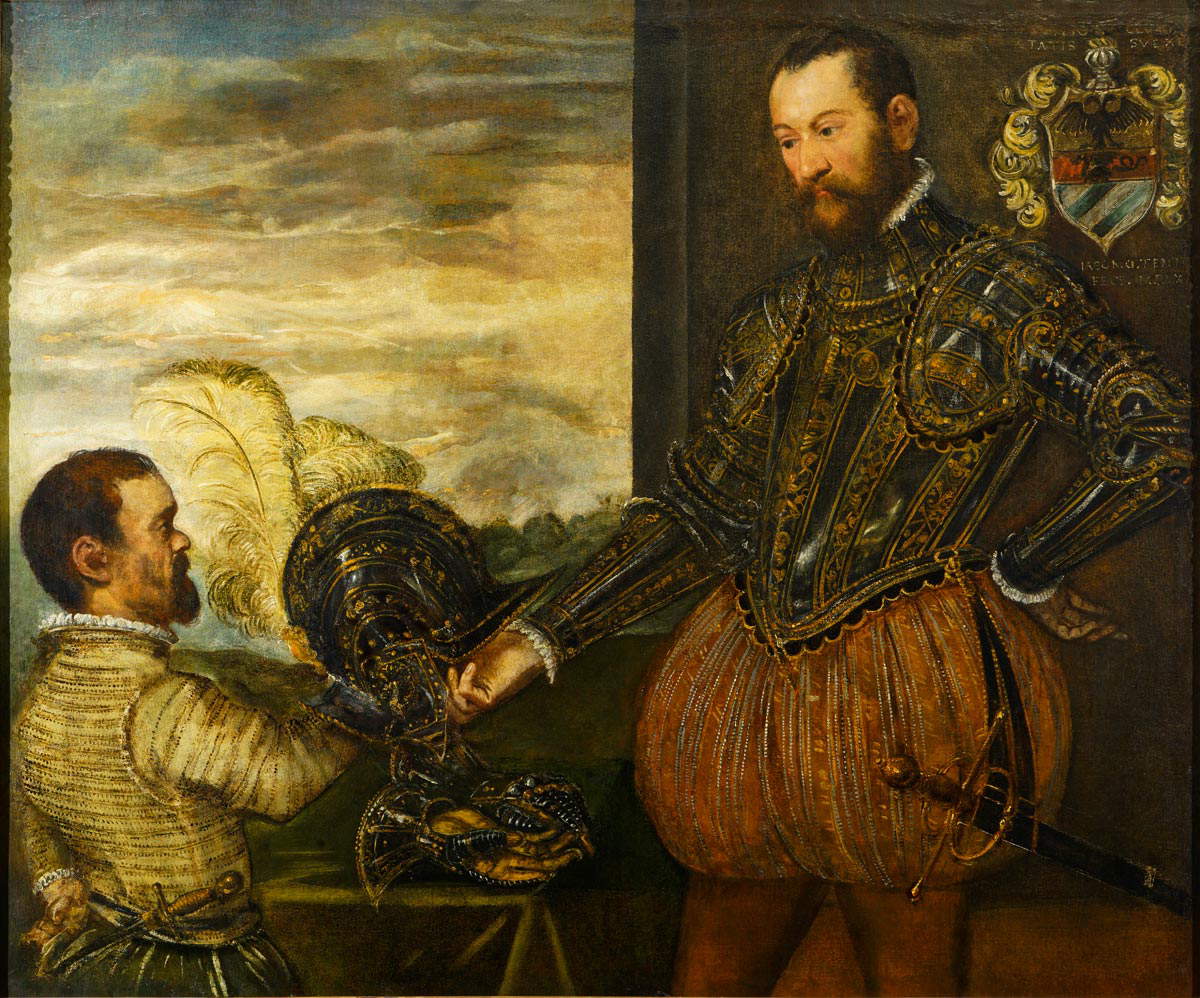 |
| Jacopo Robusti known as Tintoretto, Portrait of Scipione Clusone (1561; oil on canvas, 124 x 148 cm; Genoa, National Gallery of Liguria at Palazzo Spinola) |
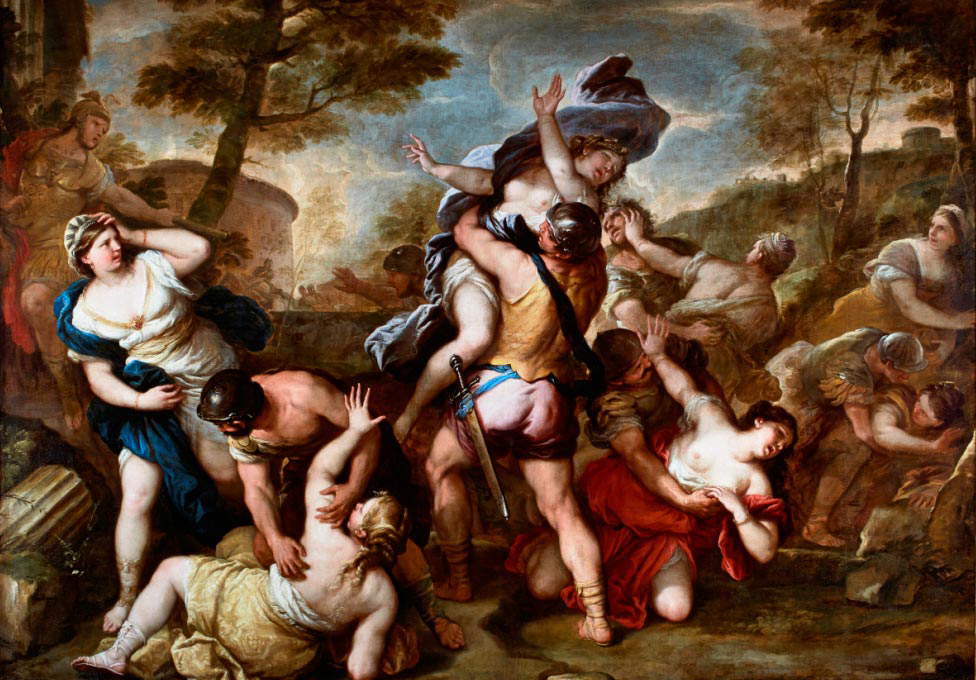 |
| Luca Giordano, Rape of the Sabine Women (c. 1680; oil on canvas, 285 x 366 cm; Genoa, National Gallery at Palazzo Spinola) |
As is well known, since the Franceschini reform, the Royal Palace of Genoa and the National Gallery of Palazzo Spinola (and with it the National Gallery of Liguria) have been linked within a single, autonomous entity. How would you rate these first four years of “cohabitation” with the Royal Palace?
I would not use the term “coexistence,” because this is an aspect of our museums that I feel very much: we are two realities that are part of the autonomous museum of Palazzo Reale, and we are realities that have many similar characteristics, but in two different contexts and in two different structures (Palazzo Reale is a huge building that has the possibility, for example through the Falcone theater, to organize beautiful exhibitions: I am thinking of the recent exhibition on Maragliano but the equally fine exhibition on sant’Agata). We do not have the opportunity to develop such projects. But above all, what I think penalizes us the most is the fact that there is a significant shortage of staff, which forces us to some forced closures: for some time now we have been closed on Sundays, and from what I have read in the statements of the new director, one of his wishes would be to open more museums on Sundays, and I find this to be a very important goal.
So, solutions to the problem of staff shortages aside, which I imagine will be the main priority in the immediate term, what is the National Gallery of Liguria going to devote itself to in the short term?
Various projects: obviously the presentation of the new acquisitions, and then I would like to resume, as the National Gallery of Liguria, a link that has never been broken, the one with the Superintendence, presenting in our spaces, for example, as Pasquale Rotondi had inaugurated, the most important restorations that the Superintendence does in the territory. Because I feel very much this concept of “Gallery of Liguria” that must not focus only on Genoa, but must include the whole territory and be open to be able to enhance the heritage of the whole region.
Warning: the translation into English of the original Italian article was created using automatic tools. We undertake to review all articles, but we do not guarantee the total absence of inaccuracies in the translation due to the program. You can find the original by clicking on the ITA button. If you find any mistake,please contact us.